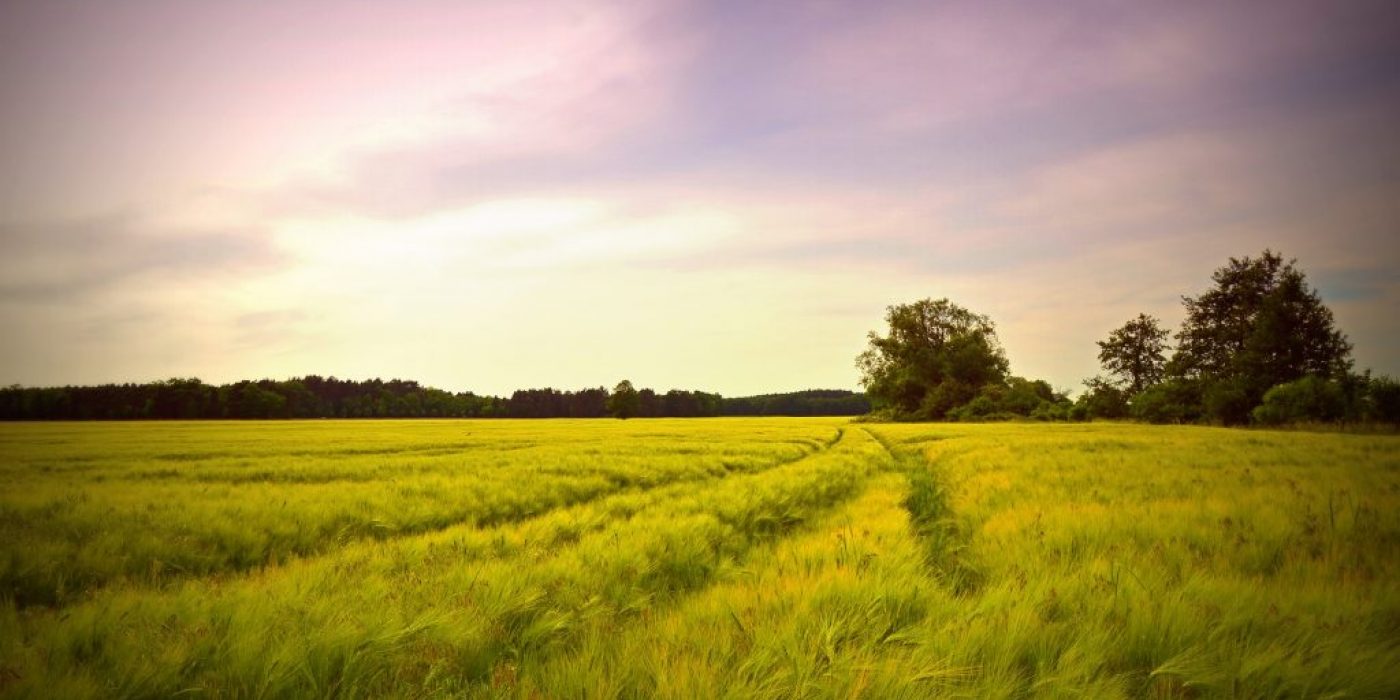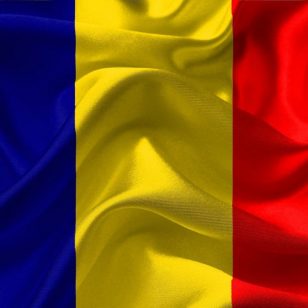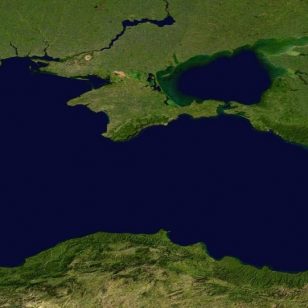Dobrogea – Romania’s southeastern region bordering the Black Sea is most colorful at the beginning of July. The sunflower yellow, the shiny beige of wheat grain crops, and the green of cornfields contrast the reddish argyle lands left empty by the harvest of the spring crops. Tall loess cliffs shelter homes for the small brownish birds that flitter over the driveways.
The noisy, continuously agitated Black Sea lies behind. South of the Danube, all is calm. As I go further from Mangalia, following the borderline between Romania and Bulgaria, there is less and less traffic. It’s mid-morning and only a few tractors sit along the way. Most agricultural machinery is already in the field, working. Most of the machines look rather new — it was only in 2007 that Romania, newly minted as an EU member and able to access the considerable associated funding, transitioned to industrialized agriculture. That funding did much to spark the sector’s development — along with the newish machinery, modern silos have replaced the outdated concrete facilities that have sat there for decades. Later in the day, trucks filled with wheat grain move slowly along the road between these storage facilities. The hay would be packed the same way it is packed in the Austrian fields.
In the open field, there is little to show any pattern distinguishable as Southern European — or as Balkan. Even the two-lane roads are impeccable. The villages however are a striking reminder of where we are — the rural architecture mixes styles familiar to the Romanian, Bulgarian, and Turkish countryside. Life moves at its own pace: I had to stop to let families of ducks and geese cross the road on their way to the lake or the Danube nearby. Along the way, goats, sheep, and cows rest on the fields close to the villages, and roadways. Amid the gray, smaller villages, which always included among their number a smattering of deserted houses, the white, well-tended gardens of the tall Orthodox churches attract the traveller’s gaze. Schools and even the city-halls are less visible in such small places, all speaking to their demographics. There are many grandparents, few young people, and fewer children still.
As I stopped by to admire the Danube flowing slowly along the road in one of the larger villages, the two kids riding on bicycles shouted “good morning” as they passed by, showing the good manners of the countryside, where a stranger is greeted in the same way as a local. They were riding aged bicycles that probably once belonged to their older brothers. Looking around, one could see the stark difference between the wealth of the fields and the poverty of the village inhabitants. Similar to other rural areas in Romania, most of the agricultural land is worked by one of the few big companies dominating the sector, with the villages’ inhabitants more or less dependent on the company’s policies and performance.
Income inequality is both taken for granted and despised by the villagers — the lack of options pushes the area’s youth to seek jobs elsewhere, driving migration to cities, or to other European countries where they can get a job in agriculture. While there are certainly exceptions to the rule — with locals having established their own small businesses — the dusty gray of the plain countryside speaks of the great differences between the local elite (the mayor, the agricultural company’s representative, etc.) and the villagers.
Just before reaching the acacia forests that run along the Danube, a road sign indicates that we could veer right to visit the Tropaeum Traiani site, in Adamclisi. It is one of the few known Roman sites in the Balkans — reportedly built after the Roman emperor Trajan’s victory over the Dacians in 101-102 A.D. Its reconstruction was done in 1977, and original pieces from the ruins were assembled and displayed at a museum in the village. Inscriptions translating the Latin from the burial plaques as well as sculpted metopes speak of the Romans’ fight to conquer the land from the Dacians. In the museum there are also archeological findings that stand proof of the canalization system the Romans built.
I hear a middle-aged gentleman from a group of tourists commenting, in front of a map highlighting the borders of the Roman Empire, on the Balkans’ natural belonging to the EU family. In a sense, he was comparing the European Union to an empire. I didn’t dare challenge him, but the comparison made me realize something else. If the EU had built itself as an empire, it would have probably been more effective. After Trajan’s expansionary leadership, his successor Hadrian, after traveling throughout the Empire, decided to renounce the Empire’s enlargement and even some of the lands conquered late by Trajan, focusing instead on improving the Empire’s administration and security.
Hadrian decided to reinforce borders by building up limes (walls) wherever needed — ironically for today’s EU troubles, he built the first limes separating England, then under the Roman occupation, from Scotland. He and his followers decided to invest in building up infrastructure: The expression “all roads go to Rome” had its physical translation. Rome was supposed to coordinate development, and all provinces were to communicate with the capital. Road connections ensured the Romanization of the territories, maintaining a relative safety throughout the empire. Adamclisi is just one example of Romanization — a place where a point distant in the East had developed similar standards of living to a Western settlement in the Empire.
As the geography of the borderline changes into a gentle hilly landscape, vineries and acacia forests appear between the agricultural fields. The newer houses stand sometimes within the vineries themselves. Due to EU funding, but also the opportunity to sell in the European free trade area, the wine business has grown considerably over the last five years. Private wineries have developed in the Dobrogea region as well as around the country, and the communities in such regions are visibly better off than the rest. But because of the history and the multiple transitions that Romania has gone through, as well as other differences, the national wine industry is yet in its infancy and can’t compete against Europe’s traditional wine-producing countries — or even with German wines. Even if, in Adamclisi, grape motifs as well as renderings of Bacchus can be found among the symbols sculpted on the monument original metopes. Because of the soil and the weather in Dobrogea, it is likely that it was rich in wineries even then.
Going past the wineries and turning to the hilly forests by the Danube, I found the first Christian church in Romania — the cave where St. Andrew the Apostle, the elder brother of Peter, is believed to have lived and served for a short while. The small cave spoke of modesty and toughness, and of how little a person needs to live and work when guided by wisdom and light. Surrounded by deep forest, it also whispered the dangers of the early days of Christianity in the Roman Empire. The cave is now part of an Orthodox monastery. The white tall walls of the church, adorned with new bluish icons, are reminders of the Northeastern Romanian monastic sites. When I entered the monastery shop, I saw icons similar to those found in the Orthodox cathedral of Chisinau. At first I was puzzled, but then I realized that St. Andrew had preached around the Black Sea and the Dnieper, and travelled to Kyiv and then Novgorod — he became the patron saint of Romania, Ukraine, and Russia. He also founded the See of Byzantium, later the Patriarchate of Constantinople — the ancient Orthodox Church. Historically, he must have travelled throughout the region during the same time that the Romans were fighting to conquer the land ( at the beginning of 100 AD).
But it would be more than 200 years before Christianity, during the time of Emperor Theodosius, would become the Empire’s state religion. After his death and the Roman defeat in Adrianopol in 375-376 at the hands of the Visigoths, the Roman Empire split in two. The Western part would be systematically weakened by successive German and Hun invasions until 476, when it completely ceased to exist, while Byzantium, cohesive and less troubled by migratory pressure, would last centuries longer. The Byzantine Empire had the Christian religion as part of its foundation. While the Eastern Eurasian peoples have been affected by invaders, they have kept Christianity as a tool of resistance. Christianity held a similar function for the Romanian provinces under the Ottoman Empire later on.
Dobrogea, currently home to Romanians but also Bulgarians, Turks, Tatars, and Greeks, bears the marks of changing governance that has been in flux since the early times of antiquity. The lowlands of the Danube and the deep forests on the hills have served as natural borders for centuries. The Black Sea has also rarely been at peace, as it stood between the Caucasus, the East of Europe, and the South. As I read the news on the way to Bucharest, I learned that about 40 divers from Azerbaijan, Bulgaria, Georgia, Romania, the United States, Turkey and Ukraine are participating in the multinational drill Eurasian Partnership Dive 16 since June 28 until July 8, in the territorial waters of Romania. The drill exercise is already at its sixthh edition. While it is a small exercise, it involves NATO and non-NATO members, all focused on defending against threats in the Black Sea. With the NATO summit in Warsaw having addressed challenges for Western Europe, such exercises pose the question of what is relevant. As in history, cohesion stands on the infrastructure built on a common feeling of security. Empires like the Roman, the Ottoman, or the Persian — while being cruel beyond measure to their citizens at times — delivered a relative tolerance for different ethnicities and relative safety, providing predictability. Once predictability diluted, the empire’s benefits disappear. And while the European Union and NATO are not imperialistic, unpredictability is challenging both organizations’ future, causing their fragmentation.
First published by RealClearWorld, on July 18, 2016.



